Forget the Myers-Briggs, Use the Big Five
The Myers-Briggs Type Indicator (MBTI) is the most popular personality assessment in mainstream culture. It provides people with one of sixteen personality types that purport to give you an accurate profile of your personality type.
Every year, around 2 million Americans take the test, with the Myers-Briggs Company making around $20 million dollars off it annually. Furthermore, they charge $49.95 to take the test online.
This appears tantamount to fraud.
The Abuse of Jungian Psychology
The MBTI is based on the presuppositions of Carl Jung, an eminent psychoanalyst of the 20th Century. He proposed eight types, based on two differing attitudes; Extraversion-Introversion, and four differing functions; Intuition-Sensing, Thinking-Feeling.

For example, an Extraverted-Thinking (ET) type would likely base their activities on intellectual considerations guided by external criteria, like a lawyer or a technician.
However, Jung did not advocate rigid typologies, especially ones that rely on strict dichotomies like the MBTI.
“Everyone possesses both mechanisms, extraversion as well as introversion, and only the relative predominance of one or the other determines the type. Hence, in order to throw the picture into the necessary relief, one would have to retouch it rather vigorously, and this would amount to a more or less pious fraud” explained Jung in ‘Psychological Types’.
The MBTI was developed by a mother and daughter team, Katharine Cook Briggs and Isabel Briggs Myers, neither whom had formal training in psychology. They adapted Jung’s original types and added a fourth dimension that claims to identify an individual’s preferred function for the external world.
MBTI Typologies
The MBTI extended the Jungian typology to include 16 types, organised into four letter abbreviations. The first letter pertains to the individual’s attitude towards the external world, either Extraversion (E) or Introversion (I) (external vs internal projection of energy).
The second letter pertains to an individual’ perceiving function, either Sensing (S) or Intuition (N). The third letter is the individual’s judging function, either Thinking (T) or Feeling (F). The final letter determines which function the individual uses to relate to the outside world, either Perceiving (P) or Judgemental (J).
Each type has a dominant and auxiliary function, which is determined by the final letter. If someone is Perceiving, then that function, either Sensing or Intuition, is dominant. Their auxiliary function is in direct opposition, either Thinking or Feeling.

These functions are further categorised as such: Extraversion and Sensing is Se, Extraversion and Intuition is Ne, Extraversion and Thinking is Te and Extraversion and Feeling is Fe. The inverse is true for those with an introverted attitude, for example, Introverted and Sensing is Si.
Therefore, type ENFJ has a dominant Fe function and an auxiliary Ni function. We should suspect such an individual to be ‘caring, enthusiastic, idealistic, organised, diplomatic and responsible’. Furthermore, they should be ‘skilled communicators who value connection with people’.
The MBTI is Wrong
The problem with this logic, is the logic itself. There is no evidence behind any of the suppositions made above. Research has consistently shown that the clean types provided by the MBTI do not correspond to demonstrable differences in personality functioning.
“In social science, we use four standards: are the categories reliable, valid, independent, and comprehensive? For the MBTI, the evidence says not very, no, no, and not really” explained Adam Grant, an organisation psychologist at the University of Pennsylvania.
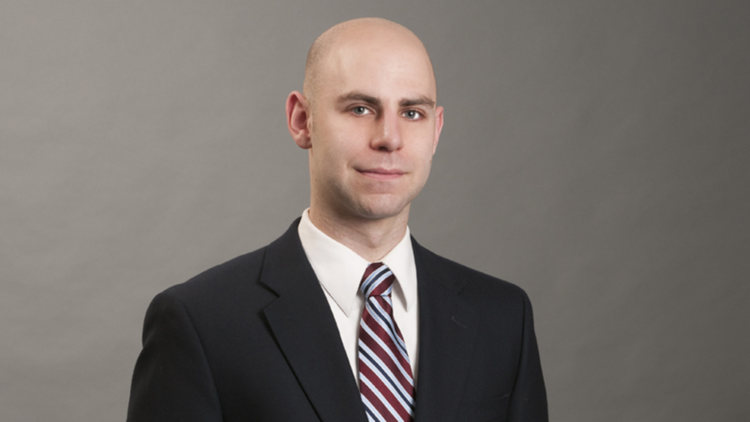
The MBTI has extremely unreliable test-retest scores. If you retake the test after 5 weeks, there is a 50% chance you will fall into a different type. In other words, the reliability is equivalent to a coin toss.
There is no concrete evidence that the MBTI measures what it claims to measure, making the categories invalid. Furthermore, the MBTI claims that functions such as Thinking and Feeling are two ends of a bipolar continuum, rather, they are independent.
Finally, the MBTI is not comprehensive because its categories do not capture the full extent of personality. There is no measure for negative emotion, and the remaining domains lack information central to personality assessment.
The MBTI is a Sham
This is merely the tip of the iceberg regarding MBTI dysfunctionality. The theory has been debunked countless times over the decades, yet it still maintains mainstream popularity.
Psychologists reckon this is due to the universal appeal of each type. Each type in the MBTI is painted in very positive, even flattering, terms. In reality, the Myers-Briggs Company is selling a product that panders to people’s sensitivities.
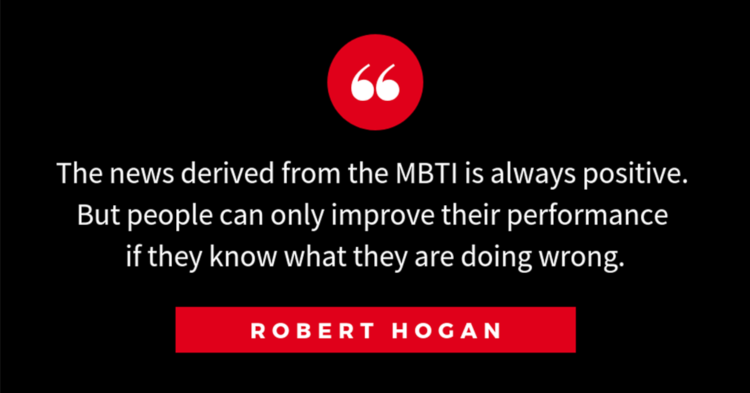
If you take the MBTI, or God forbid buy the official test, you are being lied to and taken advantage of. The test is archaic and psychometrically invalid. It was developed before the necessary computational power required to design valid personality assessments.
“Most personality psychologists regard the MBTI as little more than an elaborate Chinese fortune cookie,” remarked Robert Brown, an American psychologist and international authority on personality assessment, leadership, and organizational effectiveness.
The Big Five
While the general public continue to fall under the MBTI spell, political consulting firms like Cambridge Analytica have no such problem. This firm used modern personality framework to analyse and target demographics with tailored political ads in order to get politicians, like Donald Trump, elected.
This modern personality framework is called the Big Five (or the Five Factor Model, or the OCEAN model). Unlike the either-or nature of the MBTI, the Big Five consists of five personality traits that exist across bipolar continuums ranging from 0 to 100.
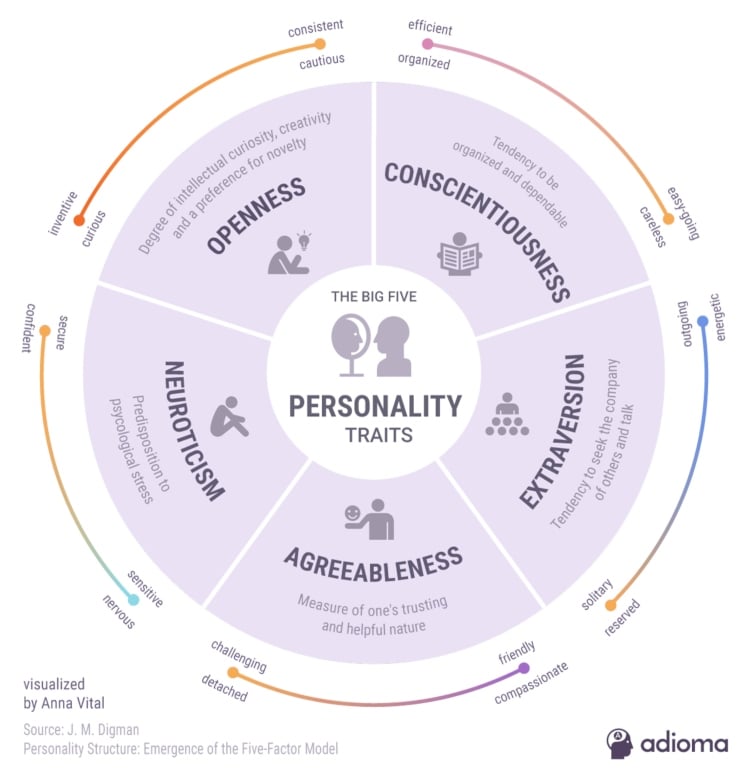
The Big Five is scientifically sound, with each trait having a strong ‘construct validity’. This essentially means that each of the traits meets the four categorical standards outlined above. Furthermore, unlike the MBTI, the Big Five has immense predictive power.
The Big Five comprises the following traits; Openness-to-Experience, Conscientiousness, Extraversion, Agreeableness and Neuroticism. Robert McCrae and Paul Costa, the dynamic duo of personality psychology, pioneered the Big Five, designating each trait with six facets.
Openness-to-Experience: Intellect and Openness
Openness-to-Experience’s facets include ‘fantasy; aesthetics; feelings; actions; ideas; values.’ People high in Openness-to-Experience tend to be open minded and intellectual. They are more flexible with respect to rules and societal norms.
Factor analysis aggregates these facets into two aspects, Intellect and Openness. Intellect is defined as a proclivity to engage in abstract and semantic reasoning, while Openness is the tendency to engage in perception, fantasy, aesthetics and emotions.
Further research shows that those high in Intellect find greater creative achievement in the sciences, while those high in Openness have greater creative achievement in the arts.
While being high in this trait may tilt one towards a university, a true liberal arts education may have the impact of increasing an individual’s level of Openness-to-Experience. This may be why universities tend to lean towards liberalism in their political attitudes.
It is when personality traits enter the extreme end of the continuum that they become problematic. For example, Cuban revolutionary, Fidel Castro, was said to be high in trait Openness-to-Experience, and led a Communist revolution. Conversely, very low Openness-to-Experience is strongly associated with an authoritarian personality.
The key takeaway here is that both aspects of Openness-to-Experience have academic and artistic utility but predict different outcomes politically. In general, liberals tend to be higher in trait Openness-to-Experience, specifically, its aspect Openness.

Hence, liberals like to open and expand borders, whether they be literal state borders or metaphorical borders such as the expansion of gender categories.
Conscientiousness: Industriousness and Orderliness
The most predictive trait is Conscientiousness. Its facets are ‘competence; order; dutifulness; achievement-striving; self-discipline; deliberation.’
Conscientiousness is further defined as individual differences in the propensity to follow socially prescribed norms for impulse control, to be goal-directed, planful, able to delay gratification, and to follow norms and rules.
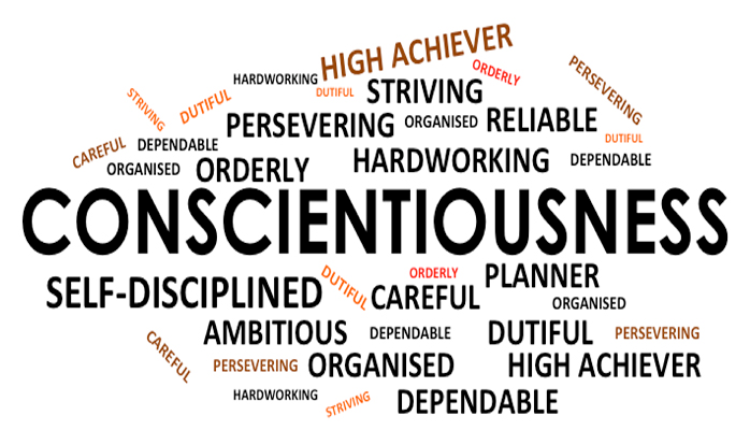
Conscientiousness is an important predictor for numerous outcomes across the entire human lifespan. Conscientious people perform better in school, in work, in relationships and in health.
People who are low in Conscientiousness tend to suffer in life. There is a significant relationship between low Conscientiousness and criminality.
Furthermore, Conscientiousness predicts political orientation. Breaking down the trait into two fundamental aspects, Industriousness and Orderliness, researchers have found that the latter is positively associated with conservatism and traditionalism. The manifestation of this finding can be found in attitudes towards immigration.
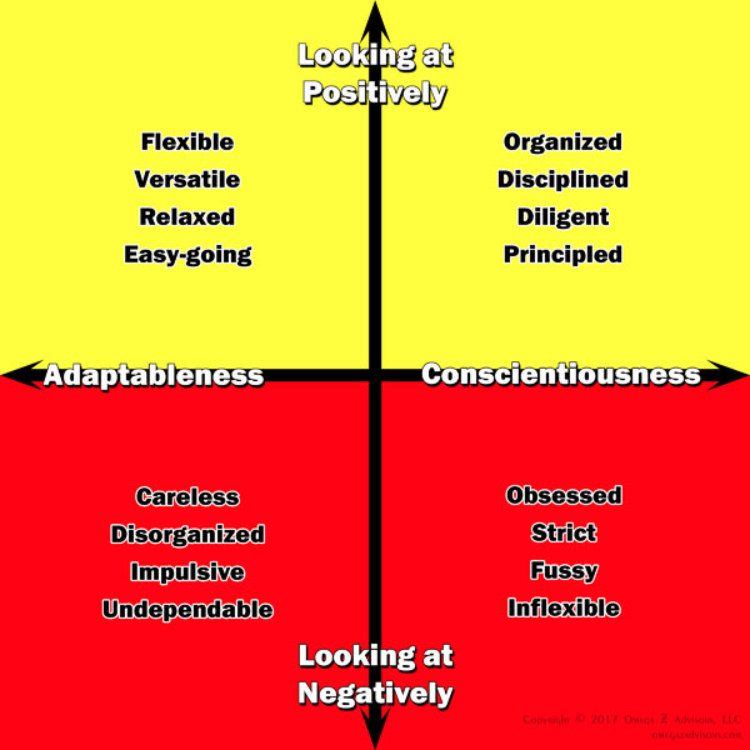
As Conservatives tend to be orderly, they are more inclined to be tougher on border control. This inclination scales into more abstract categories. Conservatives tend to disagree with transgender activists regarding the proposed expansion of gender categories, they believe that gay marriage weakens the institution; these are all manifestations of border control.
[perfectpullquote align=”full” bordertop=”false” cite=”” link=”” color=”#4AC1A8″ class=”” size=””]Suggested Reading: Practical Psychology | Conscientiousness Means Success[/perfectpullquote]
Extraversion: Assertiveness and Enthusiasm
Some scientists have proposed that Extroversion be synonymous with ‘Positive Emotion’. Indeed, the facets of Extraversion are ‘warmth; gregariousness; assertiveness; activity; excitement-seeking; positive emotion’.
Extraversion was initially coined by Jung, hence its inclusion in the MBTI. However, since its formulation, a wealth of research has been developed, refining the construct and altering its original definition.
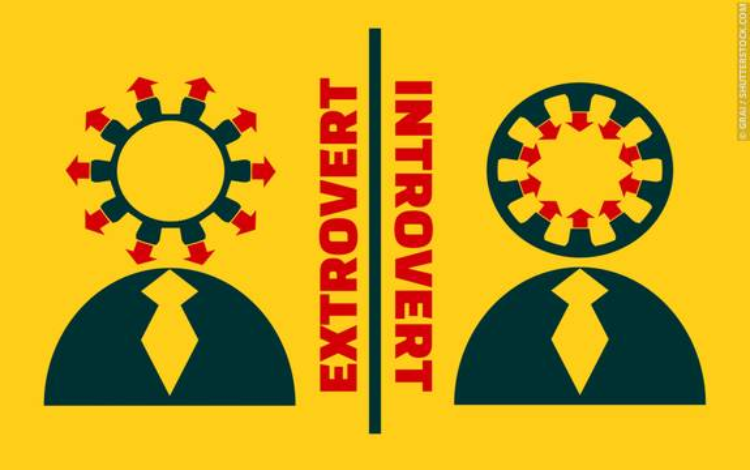
Extraversion’s higher order aspects include Assertiveness and Enthusiasm. These aspects partially stem from an earlier division of the trait into Agency and Sociability.
Assertiveness encompasses Agency, which is characterised by ‘“social dominance and the enjoyment of leadership roles, assertiveness, exhibitionism, and a subjective sense of potency in accomplishing goals.”
Enthusiasm encompasses Sociability, but importantly extends the term beyond the realm of social interaction. While Extraversion does manifest itself in a preference for social engagement, it also encompasses a broader range of positive emotion associated with the anticipation and enjoyment of reward.
Extroverted people tend to report greater levels of happiness than introverts. They are better at mood regulation, as they savour positive moods.
Social scientists performed an experiment to determine Extroversion direct and indirect effect on happiness. While Extroversion has a somewhat significant effect on happiness, it has a greater effect on social competence, which in turn has a great effect on happiness.
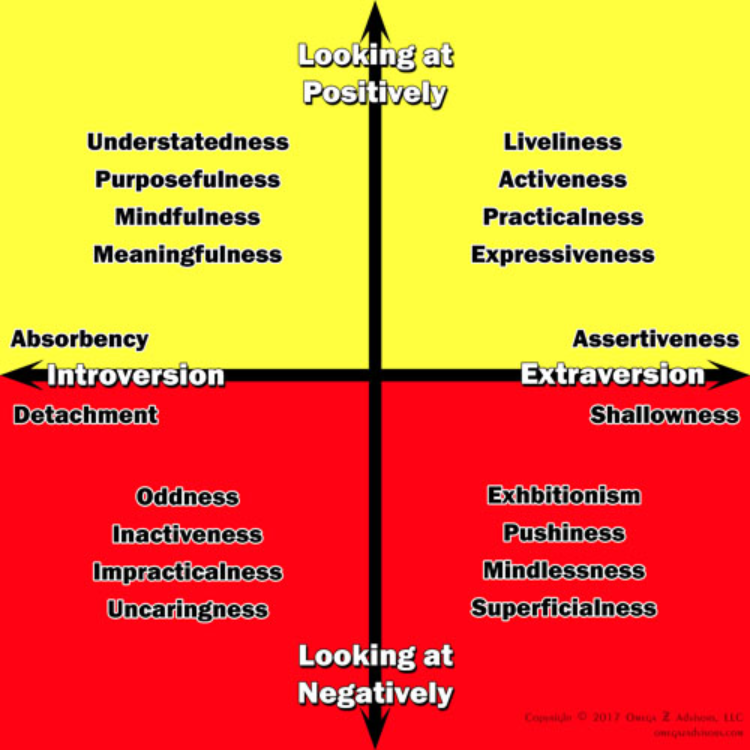
However, Extraversion does have its drawbacks. While extraverts tend to respond optimistically to punishment, they also respond impulsively. Psychologist, John Brebner, described extraverts as ‘geared to respond’, while introverts are ‘geared to inspect’.
Dopamine, the reward chemical, is fired in response to goal achievement and pleasure. Extroverts are more sensitive to dopamine production, making them outgoing and impulsive. Introverts, however, are less sensitive, therefore they’re less outgoing and importantly, less impulsive.
Agreeableness: Compassion and Politeness
Agreeableness consists of the following facets: ‘trust; straightforwardness; altruism; compliance; modesty; tender-mindedness’. It is generally defined as nice, expressive qualities of love and empathy, friendliness, cooperation, care, altruism and affection.
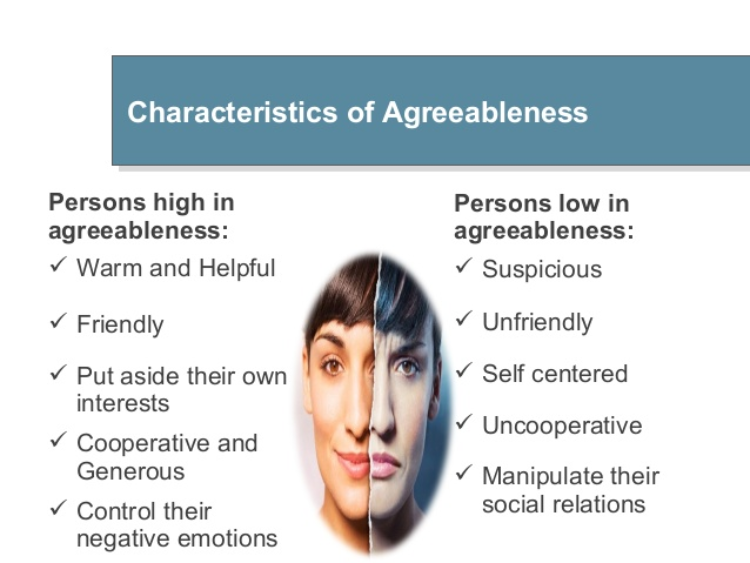
Agreeableness is one of the only traits where men and women significantly differ. If you have a random, equal sample of men and women, a woman is going to be more agreeable roughly 60% of the time. The other main sex differences are found in Neuroticism.
Agreeable people have prosocial tendencies. The engage in voluntary behaviour intended to benefit others. The trait is strong predictor of altruism, indicating measures of sympathy, social responsibility, mature perspective taking and high moral standards.
Additionally, agreeable people deploy behavioural strategies aimed at defusing conflict and maintaining warm and friendly relationships. These strategies include emotional regulation, and ‘turning the other cheek’.
Agreeableness is a strong predictor of conflict-free intimate relationships. Agreeable people tend not to antagonise their significant other. Furthermore, Agreeableness is significantly correlated with well-being, perhaps due to the interpersonal bonds it fosters.
Conversely, very disagreeable people tend to descend into criminality. Combined with low conscientiousness, being low in agreeableness is one of the strongest predictors of suffering from any form of antisocial disorder, with paedophilia being the exception.
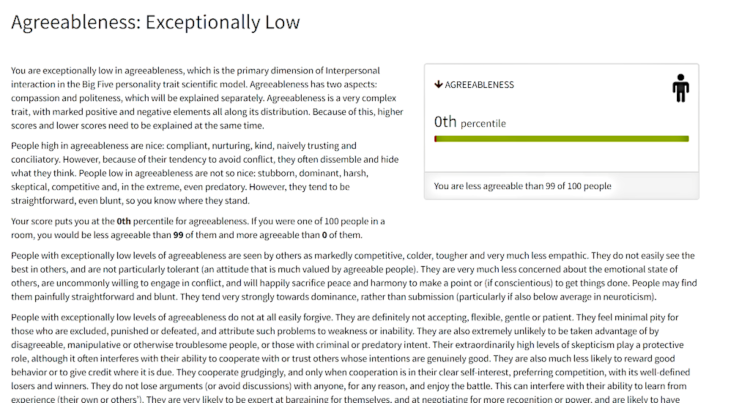
However, as personality traits are normally distributed, most people fall into the middle of the continuum. Therefore, the trait is not simply a matter of being kind or being a criminal. The truth is far more complex.
While agreeable people tend to be kind and friendly, they can also be naively trusting and conflict-avoidant. While some of these avoidance strategies may be effective, others might encourage agreeable people to hide what they really think.
Furthermore, agreeable people are sometimes naïve, while disagreeable people are sometimes predatory. This leaves the former group open to exploitation by the latter. Consequently, agreeable people tend to have lower wages than their less agreeable peers.
Agreeableness comprises two aspects; Compassion and Politeness. “The two aspects distinguish between the compassionate emotional affiliation with others and a more reasoned (or at least cognitively influenced) consideration of and respect for others’ needs and desires.”
Compassionate people are much interested in the problems of other people, and other living things, particularly if they are young or helpless. They are quite concerned about helping other people avoid negative emotion. Liberals tend to be higher in this aspect.
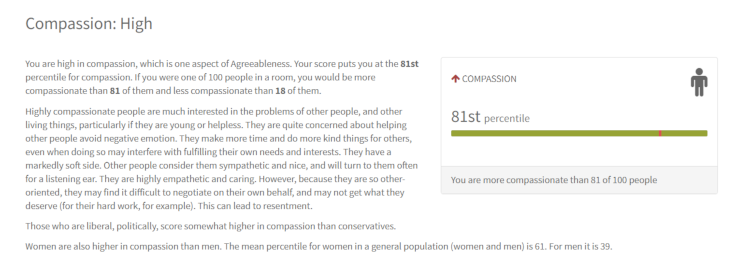
Polite people tend to respect and obey authority. They are less sceptical of hierarchy and more interpersonally submissive. They avoid conflict and find themselves in less trouble than their counterparts. They have a greater concern for order-traditionalism, hence tend to sway towards conservatism.
Neuroticism: Withdrawl and Volatility
Neuroticism is negative emotion. Its facets include ‘anxiety; angry hostility; depression; self-consciousness; impulsiveness; vulnerability’. These facets break down into the aspects Withdrawal and Volatility.
Withdrawal is the anxiety and depression aspect of Neuroticism, while Volatility encompasses emotional dysregulation and erratic changes in mood.

Being high in Neuroticism is associated with numerous issues, such as poor health, psychological distress, divorce and even life-threatening heart disease. However, neurotics do not necessarily feel less positive emotion, rather they specifically feel higher levels of negative emotion. It is possible to be an extroverted neurotic; a hysteric.
Research has been conducted to determine why neurotics experience more daily distress. Three main sources were found. First, Neuroticism tends to expose people to a great number of stressors, especially interpersonally. Second, neurotics have strong negative emotional reactions to stressors, with their reactivity being twice as important as their exposure.
Finally, 60 per cent of a neurotic’s distress stems from factors unrelated to exposure or reactivity. It appears that those high in Neuroticism just tend to have a general bad feeling that distorts their well-being. Additionally, happiness is partly a consequence of social skills, and Neuroticism impairs social skills.
Neurotics find it difficult to adjust their social behaviour to correspond to their situation and are oblivious to social cues. Scientists theorise that this may be due to a preoccupation with ‘hyperactivity’, a high sensitivity to signals of punishment and negative emotion.
Hyperreactivity is the first process is in what researchers call ‘a negative cascade’. This is a build-up and release of strong negative feelings in daily life. Hyperactivity comes first. Secondly, neurotics tend to experience negative emotion more frequently. Third, they tend to perceive the world negatively. Fourth, the negative emotion associated with one aspect of life spills over into other aspects of life.
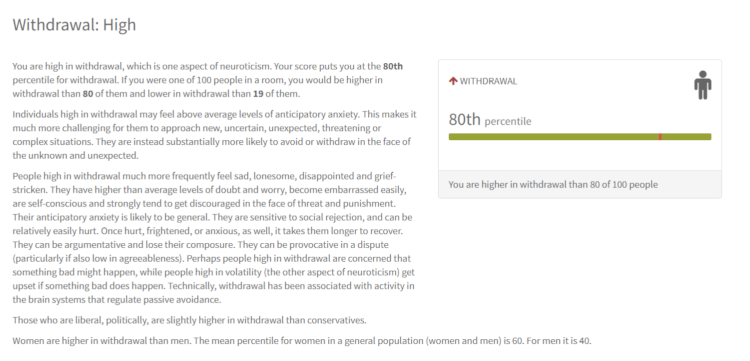
Finally, neurotics find it difficult to cope with past problems, which results in unresolved conflicts causing more negative emotion. Inadequate coping strategies are common in neurotic people. When coping with stressful events, neurotics tend to employ ‘avoidant’ or ‘emotion focused’ coping strategies.
These strategies are characteristic of a dominant Behavioural Inhibition System, and include attempts to soothe fears, calm nerves, escape via drug or alcohol abuse, or simply by just staying in bed. Interestingly, research indicates that while neurotics employ anxiety-inducing strategies during exams season, they do not get worse results than those low in Neuroticism.
[perfectpullquote align=”full” bordertop=”false” cite=”” link=”” color=”#4AC1A8″ class=”” size=””]Suggested Reading: Practical Psychology | Loneliness is Genetic and Beatable[/perfectpullquote]
The Science of Personality
Personality tests are important. Understanding yourself is the first step towards meaningful change. If you score high on Neuroticism, at least you have tangible evidence as to why you’re feeling anxious or depressed.
Discovering that you’re low in Conscientiousness may explain why your work ethic is poor, or your room is mess. If you’re too agreeable, perhaps that explains why your colleagues are earning more than you for the same job; you haven’t asked for a raise!
Being low in Openness-to-Experience might be why people tell you that you’re acting ignorant or closed-minded. Being high in Extraversion may explain why you socialise and drink too much alcohol.
Unlike the typologies of the MBTI, these traits have meaningful implications for individual thoughts, feelings and behaviours. Understanding your unique, complex trait make-up is essential to understanding yourself. It makes you less susceptible to your own unconscious mind, or to manipulation by political advertisers.
You can take the Big Five Aspect Scale at Understand Myself, for the reasonable price of $9.95. Don’t debase yourself with the MBTI, understand yourself with the Big Five.

I really see no value in this big5 test. In different areas you get some numbers indicating how you score compared to an average person. So what am I supposed to do with theese results and how can underststanding my selfes better make any difference. The purpose of the mbti test is to highlight our differences and the way we experience reality. Also how you might hurt peoples feelings without even notice it yourself. This is really usefull information when it comes to communication between us.
May I ask why you see no value in the Big5 test? It basically gives deeper understanding in your own personality, over different spectrums. Also, I don’t think you should necessarily see it as the average person, but the median person.
For example, I might be relatively more introvert. So it gives me a hint that I will most likely not prosper in a field that fits better with an extrovert. Let’s say Sales. Or if I know I’m high in neurotisiscm, I could work on that, and look at fields where I’m less likely to be stressed etc. etc.
Having said that, the big5 also highlights differences, relative to median population. I would definitely encourage more in depth studying of the Big5, hugely beneficial.
The author seems to be angry with mbti for capitalizing their design. And yet, he has the audacity to promote taking the big5 test at $9.95? Well at least I took the mbti for free. Discounting Myers-Briggs while he is in no position as a journalist. Ad hominem. Is this the way journalists write their piece nowadays?
I didn’t see any ad hominem. Also you’re leaving out the full context here. This isn’t about him being upset that they’re selling their product. This is about the fact that they’re selling a product that doesn’t work for five times the price of the best and most proven product of its kind. One would consider that a rip off.
I don t know who took the Myers test and what test did they take, I took it five years ago and I still don t fall into a different type :)) Btw, you don t necessarily need to pay for it and people like it because it offers them understanding. I learned my type and the types of people in my life, I am so pleased of how I can understand them and myself now and I feel so less insecure about myself and others. I suggest taking the test seriously and trying to at least try it in a practical way. Reading about it and taking the test just to see what it is like, without answering sincerely will certainly lead to that I HATE MBTI attitude of the author :))
Agreed. I think the Big 5 adherents are themselves unstable and so get differing results. When they become stable, so will their results.
Also, the Big 5 offers no analysis of the type person you are and the scales are too esoteric and vague for most laypersons to apply to themselves.
Why does every criticism of the MBTI lie about it? Every criticism I have read claims the MBTI characteristics are binary. This is laughably false. They are very clearly stated to be on a continuum. That you are given a 4-letter type does not mean you are not also given info on where you lie on the continuum.
If you have to lie about the thing you object to to make your point, your point has no validity.
Try again, and this time tell the truth.
Hello there David, I’d like to leave a supportive comment as all I see are detractive comments here that seem to have missed the point of the article. This is a great explanation of the predictive viability & construct validity of the big 5 inventory. As you stated, the Meyers Briggs assessment is not based on any science or repeatable experimentation, & it consistently fails to show any actual difference in behavior between people that fall in different categories. This article is a great place for a layperson to begin understanding personality science.
Myers Briggs is based on science and repeatable experimentation, people just refuse to use it to assess people’s character, even though Myers Briggs is a much more valid way of assessing people’s character than the Big Five since it’s focused on exact behavioral patterns, such as feeling and thinking measuring the frequency of increase in intonation and pitch to express sentiment and emotion and the frequency of smiling and laughing in order to assess how much emotion they express in their character, rather than simply labeling people as “irresponsible” or “negative” or “disagreeable”, something that not only frequently changes but is also only specific to certain situations, and isn’t an objective way of labeling people. Myers Briggs shows a great deal more difference in behavior between the categories than the Big Five because it is focused on people’s exact behavior, not on qualities specific to minor situations.
I’ll reply with this question
I rank in the 97th percentile for neuroticism. I’m highly pain receptive both emotionally & physically, I experience depression & anxiety without reason or as a result of feedback loops due to my negative emotional receptivity. Which part of MBTI would assess that aspect of my personality, which I would say is one of the biggest aspects?
T… it stands for turbulent
Wow, this is just awful. For one, the Big Five isn’t any more scientifically valid than Myers Briggs since they are both simply models of measuring human behavior. However, Myers Briggs is a much better personality system than the Big Five since it is more focused on concrete behavior patterns, is less subjective, and is more prominent to your character. With Myers Briggs, you measure people’s responsiveness level and loudness of pitch to identify them as either introverted or extroverted, observe how frequently they ideate and conceptualize to see whether they are a sensor or an intuitive, feeling and unfeeling are measured by the frequency of intonation and pitch increase to show sentiment and affection in their tone, and you look for the rapidness of arbitrary, unstructured behavior to identify someone as judging or perceiving. These traits are not only concrete and specific ways of measuring and identifying human behavior, but they are also more pervasive characteristics that define a person’s behavior in most situations, whereas the Big Five’s personality traits are only limited to certain situations, such as agreeableness being something that changes very frequently depending on how nice you want to be towards someone and neuroticism changing whenever you are stable or unstable and conscientiousness being only limited to school work or doing a task, not your general behavior and interaction. There’s also the issue with the fact that the Big Five paints out people as either negative or positive, with neuroticism defining people as negative and unstable, low openness defining people as close-minded and lacking abstract thought, low agreeableness defining people are disagreeable, low conscientiousness defining people as irresponsible and careless, and, according to their description, low extroversion makes you reserved and unfriendly, while Myers Briggs defines people more objectively, such as perceiving defining you as expressing more unstructured movements and responses or feeling defining you as expressing an increase in intonation to express hints of sentiment and sensitivity in your tone. And yet everyone that uses the Big Five feels the right to antagonize Myers Briggs, as if they have any right to do so. Big Five supporters are complete hypocrites and it’s sad that they feel entitled to shun Myers Briggs despite how valid of a personality system it is, especially compared to a personality system as poor yet over-hyped as the Big Five.